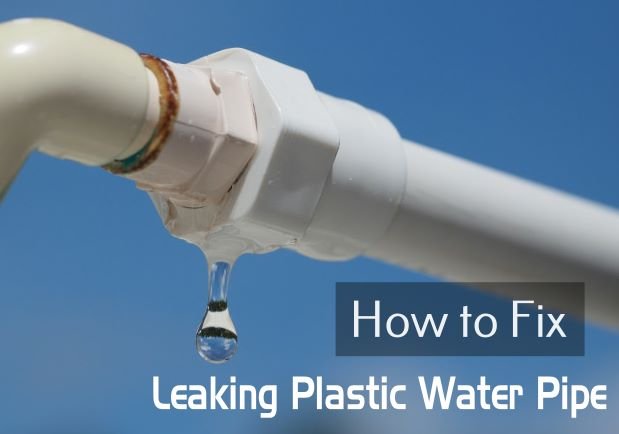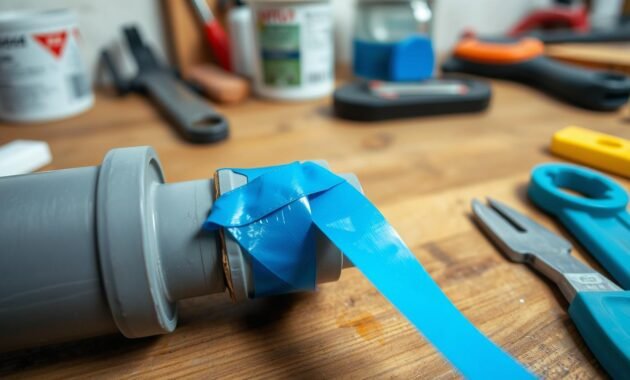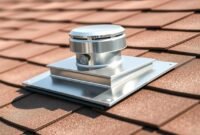Water leaks can quickly become a big problem for homeowners. They can cause a lot of damage and increase repair costs. A leaky plastic water pipe can waste a lot of water and harm your home’s structure.
It’s stressful to worry about water damage and the cost of hiring a plumber. But, I’m here to help. I’ll show you how to fix a leaky pipe easily. You’ll need just a few tools and some simple steps to do it yourself.
This guide will help you fix any size leak. You’ll learn how to tackle plumbing problems like a pro. Follow my steps to save money and protect your home from water damage.

Understanding Common Causes of Plastic Pipe Leaks
Knowing why plastic pipes leak is key to fixing them. Cracked PVC pipes can come from many factors. These factors can harm your plumbing system. Here are the main reasons for leaking PVC pipes that homeowners need to know.
Age and Wear Related Issues
Plastic pipes don’t last forever. As they age, they can start to leak. This is because constant water pressure and use weaken them over time. Eventually, small cracks can form.
- Pipes older than 15-20 years are more likely to leak
- Buildup of minerals can speed up pipe damage
- Changes in water pressure can stress the material
Temperature Fluctuation Damage
Big changes in temperature can harm plastic pipes. Freezing or rapid heating can cause cracks. PVC pipes, in particular, are sensitive to these changes.
| Temperature Range | Potential Pipe Damage |
|---|---|
| Below 32°F | High risk of freezing and cracking |
| Above 120°F | Potential material softening and deformation |
Improper Installation Problems
Not all leaks are due to wear and tear. Many problems come from how the pipes were installed. Mistakes like wrong alignment, poor sealing, or using the wrong materials can cause leaks.
- Incorrect pipe joint connections
- Inadequate pipe support
- Using wrong adhesive or sealant
- Mismatched pipe materials
Knowing these causes helps homeowners keep their plumbing in good shape. It prevents water damage too.
Essential Tools and Materials for Pipe Repair
Fixing a plastic water line requires the right tools. I’ve learned that preparation is key. Your repair kit should have items for different types of damage.
Here are the must-haves for a good pipe repair:
- PVC pipe leak repair tape – A quick fix for leaks
- Adhesive glue made for plastic pipes
- Epoxy putty for lasting repairs
- Silicone repair tape for quick sealing
- Clean rags and rubbing alcohol for prep
- Scissors or utility knife
- Protective gloves
Choosing the right adhesive glue is vital. Different pipes need different adhesives. For PVC, use a PVC-specific cement for a strong bond. Always check the manufacturer’s advice for your pipe type.
Experts say keep a full repair kit handy. You need options for different leaks and pipes. Pipe burst tape and repair bandages are great for emergencies, giving you time to fix it right.
Remember to wear gloves and work in a well-ventilated area. Always follow the product instructions for the best results.
How to Fix a Leaking Plastic Water Pipe: Step-by-Step Guide
Fixing a leaking plastic water pipe can be stressful. But, with the right steps, you can solve the problem quickly. I’ll show you a DIY method to fix most plastic pipe issues.
Before starting, get your tools ready and take a deep breath. Fixing a leak requires patience and careful preparation.
Identifying the Leak Source
Finding the leak’s exact spot is key for a good fix. Look for these signs:
- Water droplets or moisture around pipe joints
- Visible cracks or small holes in the pipe
- Wet spots on walls or ceiling near the pipe
Preparing the Pipe Surface
Proper surface prep is vital for fixing a leak. Follow these steps:
- Turn off the water supply completely
- Dry the pipe thoroughly with a clean cloth
- Use sandpaper to lightly roughen the area around the leak
- Clean the surface with rubbing alcohol to remove any dirt or grease
Choosing the Right Repair Method
The repair method depends on the leak’s size and location. For small leaks, use pipe repair tape or epoxy putty. Larger damages might need pipe repair bandages or professional replacement.
Remember, a good DIY fix needs careful assessment and the right approach. If unsure, consult a professional plumber to avoid more damage.
Quick Fixes Using Pipe Burst Tape

When a pipe leak hits, pipe burst tape is your go-to fix. It’s a fast and effective way to stop leaks without turning off your water. This tape is perfect for emergency situations.
Using pipe burst tape is most effective when you know how it works. The self-fusing silicone tape creates a tight seal. It can handle a lot of pressure and stops more water damage.
- Ideal for emergency pipe repairs
- Works on live water lines
- No special tools required
- Quick application process
To apply pipe burst tape right, clean the pipe first. Then, stretch the tape a bit as you wrap it around the leak. This ensures it sticks well and seals tight.
| Tape Type | Pressure Resistance | Application Time |
|---|---|---|
| Silicone Repair Tape | Up to 60 PSI | 3-5 Minutes |
| Standard PVC Repair Tape | Up to 40 PSI | 5-7 Minutes |
Even though pipe burst tape is great for quick fixes, it’s not a long-term solution. You should get a professional to fix or replace the pipe as soon as you can. This will prevent more serious water damage.
Applying Epoxy Putty for Lasting Results
Epoxy putty is a top choice for fixing cracked plastic pipes. It’s a strong fix for leaks in PVC pipes. This can help you avoid expensive replacements.
Epoxy putty is great for sealing leaks in tight spots. It hardens at room temperature. This makes a seal that can handle a lot of water pressure.
Surface Preparation Essentials
Getting the surface ready is key for a good repair. Before you start, make sure to:
- Clean the pipe with a cloth
- Remove dirt, grease, and moisture
- Dry it well with a lint-free towel
- Sand the area lightly for better adhesion
Application Techniques That Work
Here are some tips for applying epoxy putty:
- Knead the putty until it’s smooth
- Put it directly on the crack or leak
- Press hard to cover it well
- Smooth the edges for a clean look
Understanding Curing Time
Be patient with epoxy putty. Most need:
- 1-2 hours to start setting
- 24-48 hours to fully cure
- Avoid water pressure during curing
By following these steps, you’ll get a repair that lasts. It will fix cracked plastic pipes and stop leaks. Always check the product’s instructions for the best results.
Using Silicone Repair Tape for Emergency Repairs
When a plastic water line starts leaking, silicone repair tape can help. It’s a quick fix that stops leaks and prevents water damage. This gives you time to plan a more lasting repair.
Read also: Reasons Why There Is Water Leak Inside Refrigerator
I’ve used silicone repair tape in emergencies, and it works well. It’s best for small to medium leaks in low-pressure lines. The tape seals leaks when stretched and applied right.
- Ideal for emergency pipe repairs
- Works on various pipe materials
- Creates an instant waterproof barrier
- Easy to apply without special tools
To use silicone repair tape, follow these steps:
- Clean the damaged pipe section thoroughly
- Dry the surface completely
- Stretch the silicone repair tape while wrapping
- Overlap each layer by at least 50%
- Press firmly to ensure a tight seal
Keep in mind, silicone repair tape is only temporary. You should plan for a professional fix or replacement soon. Emergency tape repairs can last days or weeks, depending on the leak and pipe condition.
Always have silicone repair tape in your emergency kit. It can prevent a big water damage problem.
Advanced Repair Methods with Pipe Repair Bandages
When traditional methods don’t work, pipe repair bandages are a strong solution for tough leaks. These tools offer a professional-grade fix for plastic pipes. They save you time and money.
Pipe repair bandages are made of fiberglass with a special water-activated resin. They create a very strong seal for stubborn leaks. These bandages are different from usual repair methods, giving a unique way to maintain pipes.
Water-Activated Resin Technology
The bandages’ magic is in their water-activated resin. When wet, the resin turns into a hard layer that seals leaks fast and well. This tech has several benefits:
- Rapid setting time (usually within minutes)
- Extremely durable seal
- Works on various pipe materials
- Resistant to temperature changes
Proper Wrapping Techniques
Applying pipe repair bandages needs care. First, clean the damaged spot well and make sure it’s dry. Then, wet the bandage and wrap it tightly around the leak, a bit overlapping each layer.
| Repair Method | Effectiveness | Durability |
|---|---|---|
| Pipe Repair Bandages | High | Long-lasting |
| Epoxy Putty | Medium | Moderate |
| Burst Tape | Low | Short-term |
Practice the wrapping on a spare pipe to get better. The goal is a smooth, tight wrap that covers the damage fully. With practice, you’ll master these advanced repair solutions.
Professional Tips for PVC and PEX Pipe Repairs

As a seasoned DIY enthusiast, I’ve learned that repairing cracked PVC pipe requires specific techniques different from fixing PEX tubing. Each type of plastic pipe has unique characteristics that demand specialized approaches to prevent further damage.
When addressing how to repair cracked PVC pipe, I recommend focusing on these critical aspects:
- Material compatibility of repair products
- Surface preparation techniques
- Understanding pipe stress points
- Selecting appropriate repair methods
For a cracked PEX pipe fix, the strategy changes slightly. PEX pipes are more flexible, which means repair techniques must account for their unique properties.
| Pipe Type | Best Repair Method | Difficulty Level |
|---|---|---|
| PVC | Epoxy putty or pipe replacement | Moderate |
| PEX | Compression fittings or specialized repair tape | Easy to Moderate |
When dealing with leaking PVC, always remember that prevention is better than cure. Regular inspections and maintaining proper pipe support can significantly reduce the likelihood of cracks and leaks.
Sometimes, despite your best efforts, professional intervention becomes necessary. If the damage extends beyond a small crack or you’re unsure about the repair process, consulting a licensed plumber is the safest option.
Preventing Future Pipe Leaks and Maintenance
Keeping your plumbing system safe is key to avoiding expensive water damage and surprise repairs. By taking steps to stop water pipe leaks early, you can save a lot of time and money.
Regular upkeep is vital for fixing plastic plumbing issues. I suggest making a detailed check-up plan. This way, you can spot problems before they get worse.
Essential Inspection Guidelines
- Check exposed pipes monthly for signs of wear or moisture
- Look for small cracks or discoloration in plastic pipes
- Test water pressure to detect hidden leak risks
- Examine pipe connections and joints for possible weaknesses
Weather Protection Strategies
Extreme weather can harm your plumbing. Knowing how weather affects your pipes is important for fixing leaks yourself.
| Weather Condition | Recommended Protection |
|---|---|
| Cold Climates | Insulate pipes, use heat tape, maintain indoor temperature |
| Hot Climates | Install UV-resistant pipe covers, check for sun damage |
| Humid Regions | Use dehumidifiers, apply corrosion-resistant coatings |
By spending a bit of time on maintenance, you can lower the chance of pipe leaks. This also helps your plumbing system last longer.
Conclusion
Fixing a leaking plastic water pipe is easier than you think. We’ve covered many ways to handle home plumbing issues. Knowing why pipes leak helps you act fast and avoid big water damage problems.
Read also: Common Problems Water Heater – Making Sound
I’ve shown you several ways to fix plastic pipes, from quick fixes like pipe burst tape to more lasting solutions with epoxy putty. Each method has its own strengths, depending on the leak’s size and where it is. The most important thing is to pick the right method and do it well.
While fixing things yourself can save money, some jobs need a pro. If you see a lot of damage or aren’t sure what to do, call a licensed plumber. Your home and safety come first.
Regular maintenance, knowing where leaks can happen, and having the right repair skills keep your plumbing system safe. Stay ahead, be ready, and face those pesky leaks with confidence.


